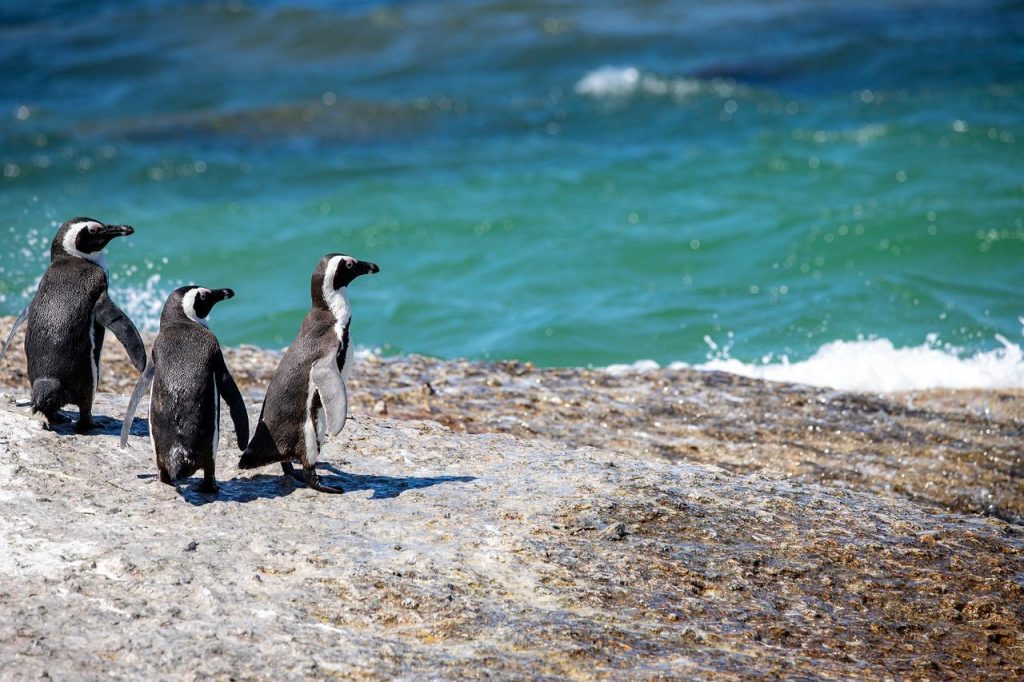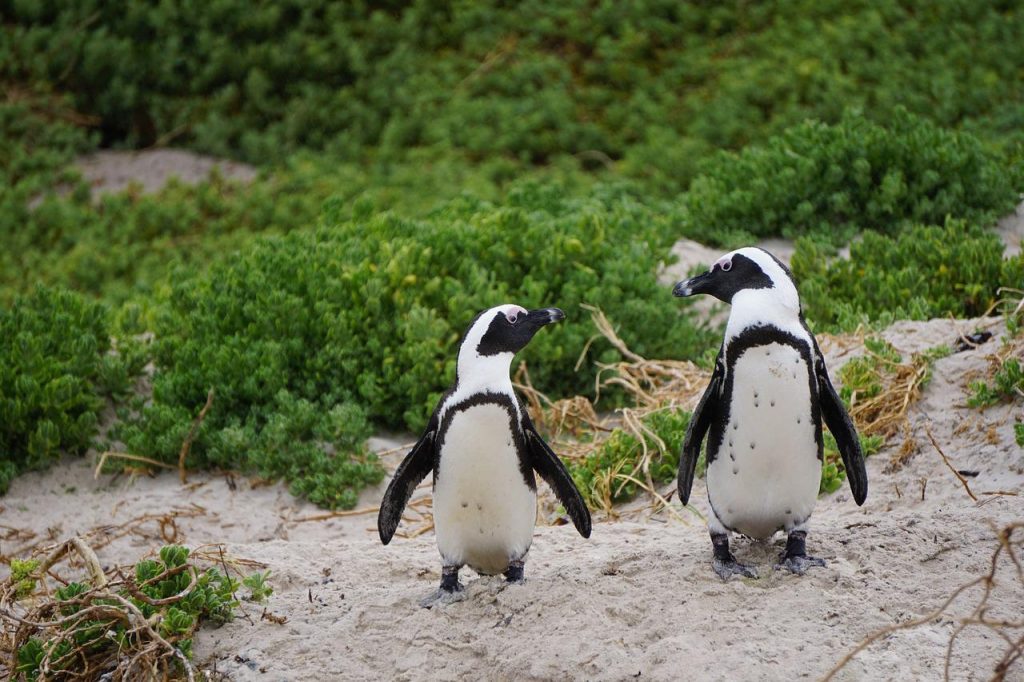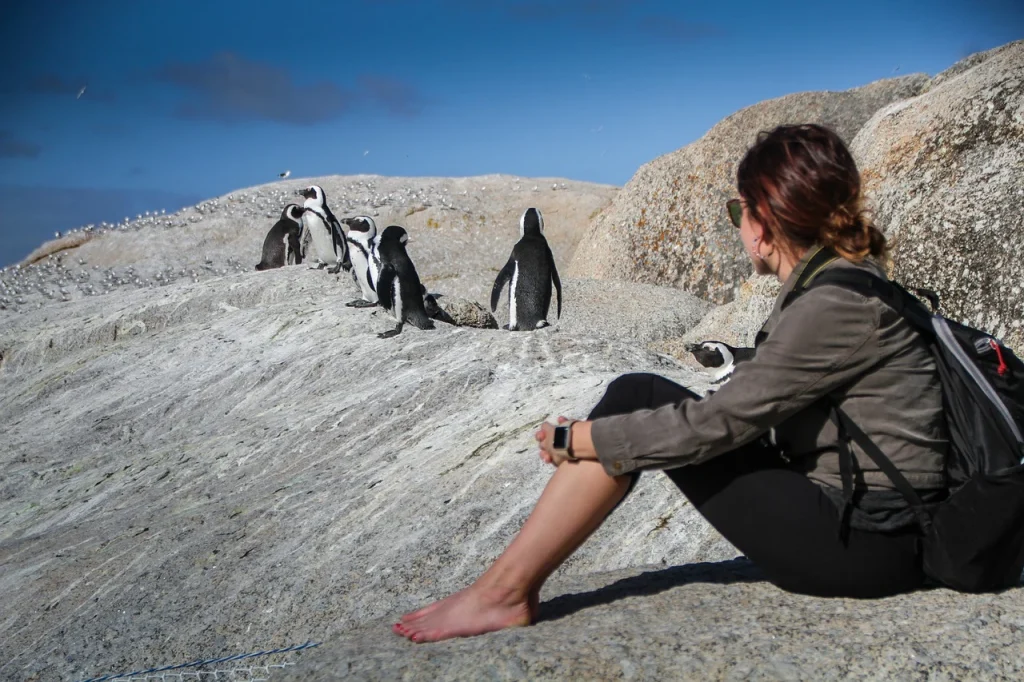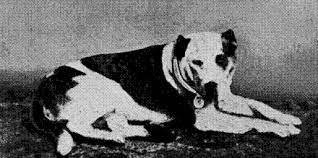Because penguins change slowly, they are at risk from climate change.
A large study of both extinct and living penguins shows that the birds may not be able to keep up with the speed of warming in the modern era.
Penguins seem like they were made for Antarctica, where they slide down snowy hills and swim quickly through cold water.
But the charming birds weren’t always aquatic acrobats that couldn’t fly. Changing from being able to fly to being able to swim required almost a whole new set of skills, body shapes, and functions.
Now, new research uses fossil records and genomic data in a way that has never been done before to look at how penguins have changed over time and how the climate has affected their lives.
Daniel Ksepka, who helped write the study and is an avian paleontologist at the Bruce Museum in Greenwich, Connecticut, says that penguins are the most entertaining thing that evolution has made. “Their bodies and ways of life are completely different from those of their ancestors.”

The study, which came out today in the journal Nature Communications, shows that early penguins were surprisingly quick to adapt to their new environments after the Cretaceous-Paleogene mass extinction about 66 million years ago.
After the dinosaurs went extinct, there was more room for other animals to move around. Penguins moved into different climates and biomes in the southern half of the world.
But the research also shows that penguins evolve at the slowest known rate of all birds. This means that their rate of genetic changes has slowed down a lot since they moved to the ocean after the mass extinction.
The authors of the study say that makes them less likely to be able to adapt quickly to the fast pace of climate change today.
The International Union for Conservation of Nature has already listed as endangered or vulnerable more than half of the 18 species of penguins that live today. These penguins live in places as different as Brazil, New Zealand, and South Africa.
Because evolution has slowed down, Vanesa De Pietri, an avian paleontologist at the University of Canterbury in New Zealand who was not involved in the study, says that modern penguins don’t seem to be as well equipped as ancient penguins to survive these rapid changes in the environment.
Getting used to living in water
De Pietri says that there aren’t enough fossils to know who the direct ancestor of penguins was. The mysterious ancestor probably lived more than 60 million years ago, when it split off from groups of flying birds that were related to albatrosses and petrels.
Past research on penguin evolution has also been limited by the fact that about three-quarters of all penguin species are extinct and can only be studied through their fossils.
Up until now, no studies have put together all of the fossils with the genomes of all living and recently extinct penguins.

Nic Rawlence, a paleogeneticist at the University of Otago in New Zealand who did not take part in the study, says, “This is an impressive way to understand how penguins evolved.” (Look at some lovely pictures of penguins.)
By putting these two huge sets of data together, the authors were able to improve the evolutionary tree of penguins, find times when penguins became more different, track changes in populations, and figure out which genes helped penguins adapt to life in water.
Ksepka says, “It really shows us the whole picture.”
The analysis of the penguins’ genomes showed how the birds evolved to have stiff flippers and feathers that don’t get wet so they can swim, thick skin and fat to keep warm, and the ability to see underwater and control how much oxygen gets into their blood so they can dive.
Follow us on Pinterest
Scientists already knew about these changes, but comparing the genomes of all living penguins helped the team find the genes that make them happen.
By linking the genomes to the fossil record, scientists were also able to estimate when different genes and species first appeared. The last step was to put it all together in terms of climate.
Keeping up with the changes in climate
After they changed quickly at first, penguins’ rate of change slowed down over time. (Woodpeckers have one of the fastest birth rates, but nobody knows why.)
After adapting to life in the ocean, penguins had to learn to live in different climates over millions of years.
When the most recent glacial period started just over two million years ago, a new wave of species diversification began among penguins.
As ice sheets grew and the environment changed, penguins moved and often lost contact with other groups. Over hundreds of thousands of years, while the ice kept them apart, penguins changed into the many different species we know today.
Researchers have thought about this process before, but the new combination of genomic and fossil data is the strongest proof yet.

“This study has shown very well, from a genomic point of view, how major changes in the climate can be linked to times when penguins diversified,” says De Pietri.
A bleak future?
Many penguins were able to easily adjust to changes in the weather in the past. But the rate of climate change today is a lot faster than the changes penguins have lived through in the past. This gives penguins a new evolutionary challenge. It’s one that the people who wrote the study don’t think penguins are likely to meet.
“Many penguins live in places where climate change is worst,” says Ksepka. Species in Antarctica, like the chinstrap penguin, are especially in danger because the continent has lost about three trillion tons of ice since the 1990s. Ksepka says that penguins who live on islands are also in danger because they “have nowhere to go.”
“I really think that the fate of penguins is tied to the fate of people.”
Read another article from us: Huge Humpback Whale Surprised it’s Watchers






